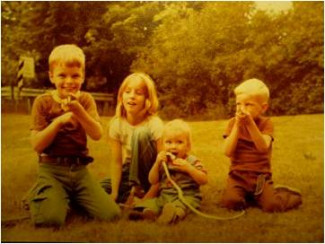
Johns Hopkins UniversityEst. 1876
America’s First Research University
An Exploration of American Snakes with Sean Graham

Books have a way of influencing your life more so even than experiences. They seem to connect directly to your subconscious, change it, and can alter your path. So while I have been enamored with creeping and crawling things ever since I first began catching toads, lizards, and harmless snakes, I’m not sure I would have mounted those backyard expeditions if my grandmother hadn’t given me my first dinosaur book. That book began my childhood obsession with dinosaurs, which soon transferred to amphibians and reptiles when l realized they can actually be found alive. Likewise, my interest in snakes was strong but may never have flowered into a career had it not been for my mother’s gift of Roger Conant’s Field Guide to Reptiles and Amphibians. I accompanied my mom to Maggie Valley, North Carolina, where, after seeing a snake demonstration at the local zoo, I was allowed to heft an adult boa constrictor on my shoulders. At a local bookstore, I spotted the field guide. My mother told me it was too expensive, and doubtless it was; during those days she was often the sole bread winner for four growing children. Yet when we got back to our cabin a day later she presented it to me. That book, long ago rebound with duct tape, is behind me on my office shelf. You could make a rough outline of my life through my most beloved books: Ironhead. Fahrenheit 451. The Stand. Cosmos. Desert Solitaire. The Crossing. Vertebrate Life. The Grapes of Wrath. And as a scholar, you soon identify gaps in our knowledge that a new book can fill.
When I was a graduate student studying snakes I became convinced that a book like American Snakes was needed for the public. I learned about snakes from observing them and reading scientific papers, edited volumes, and handbooks, but these sources aren’t written in an inviting, engaging style and the literature on U.S. snakes is scattered across decades of research using a variety of approaches. The closest books to what I thought was needed were Rick Shine’s “Australian Snakes: A Natural History” and Harry Greene’s “Snakes: The Evolution of Mystery in Nature”. However, the former was an outstanding, readable summary about the everyday lives of Australian snakes, and the latter is an elegant book about all the world’s snakes. I felt we needed a book similar in approach and scope to Rick’s book that focused on American species. And that’s the book I set out to write.

I learned many new things about snakes by writing the book, including things that I think would make excellent topics for future research. For example, there is probably more research on mating behaviors in snakes, which is exceedingly difficult to observe, than on the antipredatory behaviors that snakes commonly display toward human observers. We also don’t really know what many snakes are doing when crawling around on their daily routines; the hunting tactics of snakes that ambush prey have now been intensely observed, but most of our snakes aren’t ambush hunters. Instead, they have been characterized as “active foragers” which doesn’t encapsulate what they are doing. Instead, after reading dozens of papers by people who tracked individual snakes for long periods, I concluded many snakes are “raiders” that move about the landscape entering burrows looking for sleeping prey. But we still don’t know for sure.
What we do know for sure is that snakes are fascinating, dignified, shy creatures that are nothing like the villains they are painted as in stories and modern movies. Native American oral traditions often depicted them as mysterious, powerful, wise, and magnanimous; so they were closer to the mark. If there is one thing I hope readers take from the book it is that snakes are just like any of our other great wildlife and deserve our respect. As with many things that are at first misunderstood, learning about snakes can quash misplaced fears. Hopefully my book will create more snake lovers and convert a few snake killers.
And perhaps also permit me the hope that my book will be purchased by some budding naturalist’s mother, who at first hesitates at its price, but then makes it a gift that lasts a lifetime.
Sean Graham is an assistant professor of biology at Sul Ross State University. He is also the author of American Snakes


